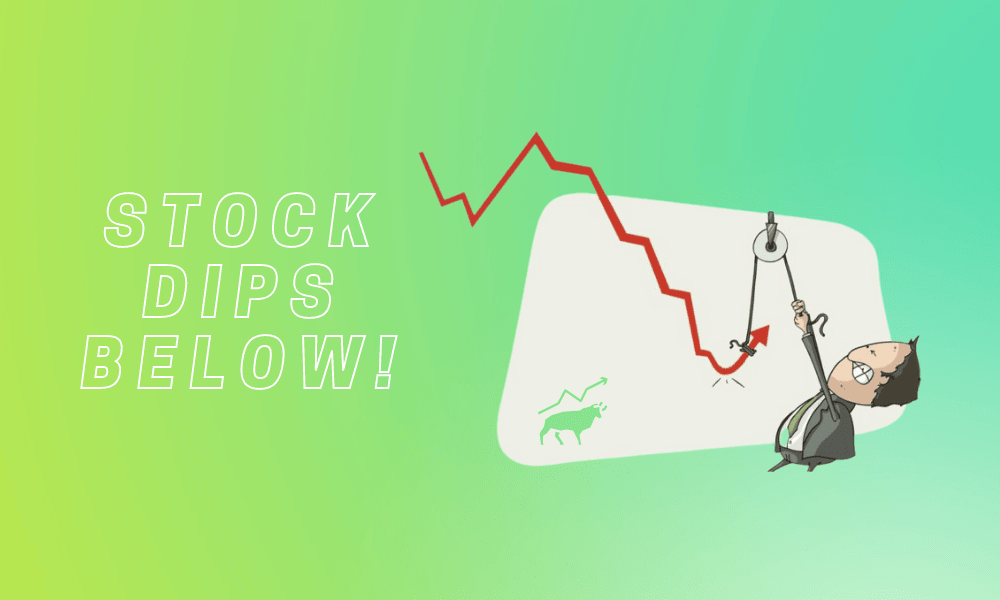Experimenting with stock simulators (before investing real money) can provide insight into the m...

Experimenting with stock simulators (before investing real money) can provide insight into the market’s volatility and your emotional response to it.
Should you be worried?
On Monday at one point, the S&P 500 was down 10% from its recent highs. However, investors who are panicking should bear in mind long-term trends.
What’s unusual is not that we’ve had a 10% correction; what’s unusual is how long it’s been between corrections. In February-March 2020, the S&P 500 dropped about 33% before recovering.
Prior to that, the last 10% decline was in late 2018, when the Fed talked about raising rates aggressively. That period — from the end of September to just before Christmas — resulted in a decline of 19% for the S&P 500.
That’s two 10%+ corrections in the last three years and two months. That works out to a correction every 19 months.
While that sounds like a lot, it is below the historic norm.
| Trending: Winter Is Coming! Crypto Investor Fears As Bitcoin Falls 50% |
In a 2019 report, Guggenheim noted that 5% to 10% corrections in the S&P have been regular occurrences.
Since 1946, they noted there had been 84 declines of 5% to 10%, which works out to more than once a year.
Fortunately, the market usually bounces back fast from these modest declines. The average time it takes to recover from those losses is one month.
Declines of 10%-20% have happened 29 times (about once every 2.5 years since 1946), 20%-40% nine times (about once every 8.5 years), and 40% or more three times (every 25 years).
Two takeaways: First, most pullbacks above 20% have been associated with recessions (there have been 12 since 1946).
Second, for long-term investors, it tells you that even relatively rare but severe pullbacks of 20%-40% don’t last very long — only 14 months.
The S&P 500 Rises 3 Out of 4 years
Another way to slice the data is this: When dividends are factored in, the S&P has risen 72% of the time year-over-year since 1926.
That means roughly one out of every four years the market is down. It can (and does) put together strings of down years.
But that is not the norm. In fact, the opposite is true. More than half the time (57%), the S&P posts gains of 10% or more.
The Fed: Is this a secular shift in stocks?
Still, could some deeper, longer-term correction be occurring? Even bulls admit the last 12 years have been unusually rich for market investors.
Since 2009, the S&P 500 has averaged gains of roughly 15% a year, well above the historic returns of roughly 10% a year.
Many traders attribute that five-percentage-point yearly outperformance largely to the Fed, which has not only kept interest rates extraordinarily low (making cheap money abundantly available for investors).
But has also pumped enormous amounts of money into the economy by expanding its balance sheet, which is now at roughly $9 trillion.
If that is the case — and all or a good part of that excess gain is due to the Fed — then it is reasonable to expect that the Fed withdrawing liquidity and raising rates might account for a future period of subnormal (below 10%) returns.
In its 2022 Economic and Market Outlook, the mutual fund and ETF giant noted that “The removal of policy support poses a new challenge for policymakers and a new risk to financial markets.”
They described their long-term outlook for equities as “guarded,” noting that “high valuations and lower economic growth rates mean we expect lower returns over the next decade.”
How much lower? They expect returns on a 60/40 stock/bond portfolio to be roughly half of what investors realized over the last decade (from 9% to approximately 4%).
Still, Vanguard is not expecting negative returns; they are just expecting lower returns. What does it mean for stocks to be 10% off their highs?
You heard it all day Monday: “The S&P 500 is 10% from its highs!”
True, but how relevant is that to the average investor?
How many people do you know who invested all their money at a market top and pulled it all out at the market bottom Monday?
Yes, plenty of people panic at bottoms, but very few ever invested all their money at the market top. Most people engage in some form of dollar-cost averaging where they invest money over many years.
That means that when stocks pull back, they are almost certainly pulling back from a higher price than you paid for them.